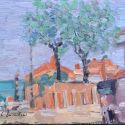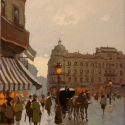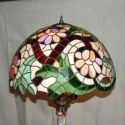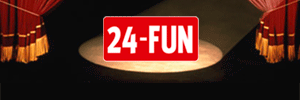
Casino Constanta
The biggest harbour of Romania and a historical city, one of most important tourist destinations and certainly the place to begin a splendid summer vacation, at the seaside, on the beach, with every facility - fun, lodgings, food - at hand.
Constanta is best known for it's importance as a tourist resort and open city for all, but it is also an important cultural and historical centre in the history of the country, a city which has been for centuries a melting-pot for several ethnic groups, a place where you can take a stroll among the streets, can visit the old part of the city, with it's houses, markets, shops and restaurants, can admire the tourist part, very modern and very crowded or can visit, one by one, the various monument and attractions. All in all, Constanta is a very good choice for a visit and a holiday.
In it's recorded beginnings, the future city was actually a Greek colony, Tomis, later administered and further enlarged by the Romans, who changed the name after the emperor Constantin, a change that kept until this day. Over the centuries the place also received a large Turkish minority, and in the 19th century, at the request of King Carol I of Romania, was once again replaned and redeveloped, and it begam a modernisation process, at the same time being more and more popular among tourists. In no small part due to the quality of beaches and water, as well as the later founding of several summer resorts nearby, such as Neptun, Mamaia, Eforie and the likes. Nowadays Constanta is also a major economic and cultural center, with several monuments, ruins, a historical Casino, several museums and shops, restaurants, cafes and on and on, while the are is filled with old villages, vineyards, monuments, churches and others.
Places to see and love in Constanta :
Ovid's Square : it was the project of Ettore Ferrari, a sculptor who completed it in 1887, and it's center is the statue of the Roman poet Ovidius, exiled here around 8 AD.
The Genoese Lighthouse : another landmark of Constanta and a constant reminder of just how important the sea and travelling were to the city. According to local sources, this was built by 1860 in Constanta as a thank you and honour to those Genoese merchants who made the town a successful trading spot several centuries earlier.
The Great Mahmudiye Mosque : this is one of the key places here in Constanta and all tourists come to see the Mosque. It was actually built in 1910 on the orders of King Carol I, to serve as the house of the Mufti, the leader of the large Muslim community in the region, and it is a splendid example of mix between Romanian and Byzantine architectural elements, which makes it unique looking. Inside you can admire several decorative elements, such as a large carpet, so large that it actually weighs over 500 kilos. You can also go up the minaret, 50 m high, and see the harbour and the old quarters.
The Casino : another real special place in Constanta, the Casino is a place of drama, fame and fortune, and was built in the interwar years, in Art Nouveau style, quickly becoming a favourite place for gamblers and socialites. It is nice to visit it, at least for the architecture and charm of the place.
The Fantasio Theatre : this was built in 1927 by a Greek investor, Demostene Tranulis, and beared the founder's name until 1947, when it was renamed as Fantasio. One of the most popular theatres in Constanta, old and very loved, also interesting due to the neoclassical elements of the building.
The St Peter and Paul Cathedral : a huge and important holy place of the city, built in 1883 - 1885 in Greco-Roman style, this church is not only beautiful and a landmark in the history of Constanta, it is only a splendid example of sacred art and architecture. Seeing as it is today, it is hard to believe that at one time, in WW2, the cathedral was almost completely destroyed, being rebuilt only after the war.
Roman Mosaics : one of the most important legacies of the Roman times, when Constanta became a powerfull city, it is near the harbour. The ruins of the ancient structure are simply fascinating for any visitor, not to mention the several hundred squared meters of wonderful mosaics. The place was actually built by the end of the 4th century and would serve as the main commercial place for Constanta over the next three hundred years of even more. Here you could shop or you could find warehouses or workshops, and even public baths.
The National Museum of Archaeology and History : as any specialist would say, this is one of the best museums of it's kind in the country, being built in 1879 and redone in 1911 by the famous Vasile Parvan. It's collections are rich, varied and highly valuable to simple visitors and researchers alike, as they feature artefacts, tools, weapons and art dating from prehistoric times to the Greek and Roman eras. There is also a rich coin collection, statues, ceramics, jewelery.
Marina Museum : another important place in Constanta is this museum hosted inside the former headquarters of the old Naval School, presenting in full detail the fascinating history of Romanian sea travelling, from the ancient times to the present. Among the collections featured in the permanent exhibition are the coin and ceramic collections, weapons, uniforms, various tools, documents, machines, photograps, sailing tools, old books and newpapers and so on.
The Art Museum : this is considered visitors one of the best attractions in Constanta, for it hosts very often impressive exhibitions, aside from it's permanent ones. Focused on Romanian masters and contemporary art, the museum also has several impressive selections of European masters.

































